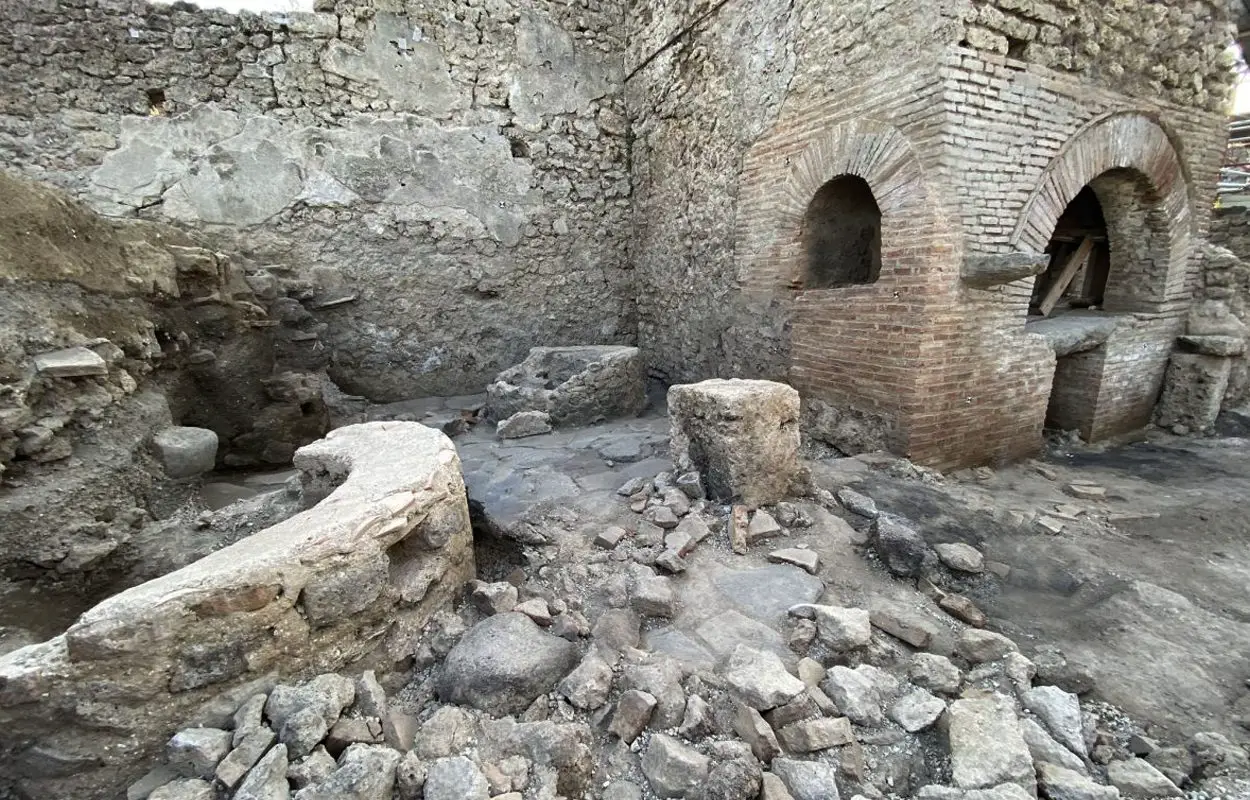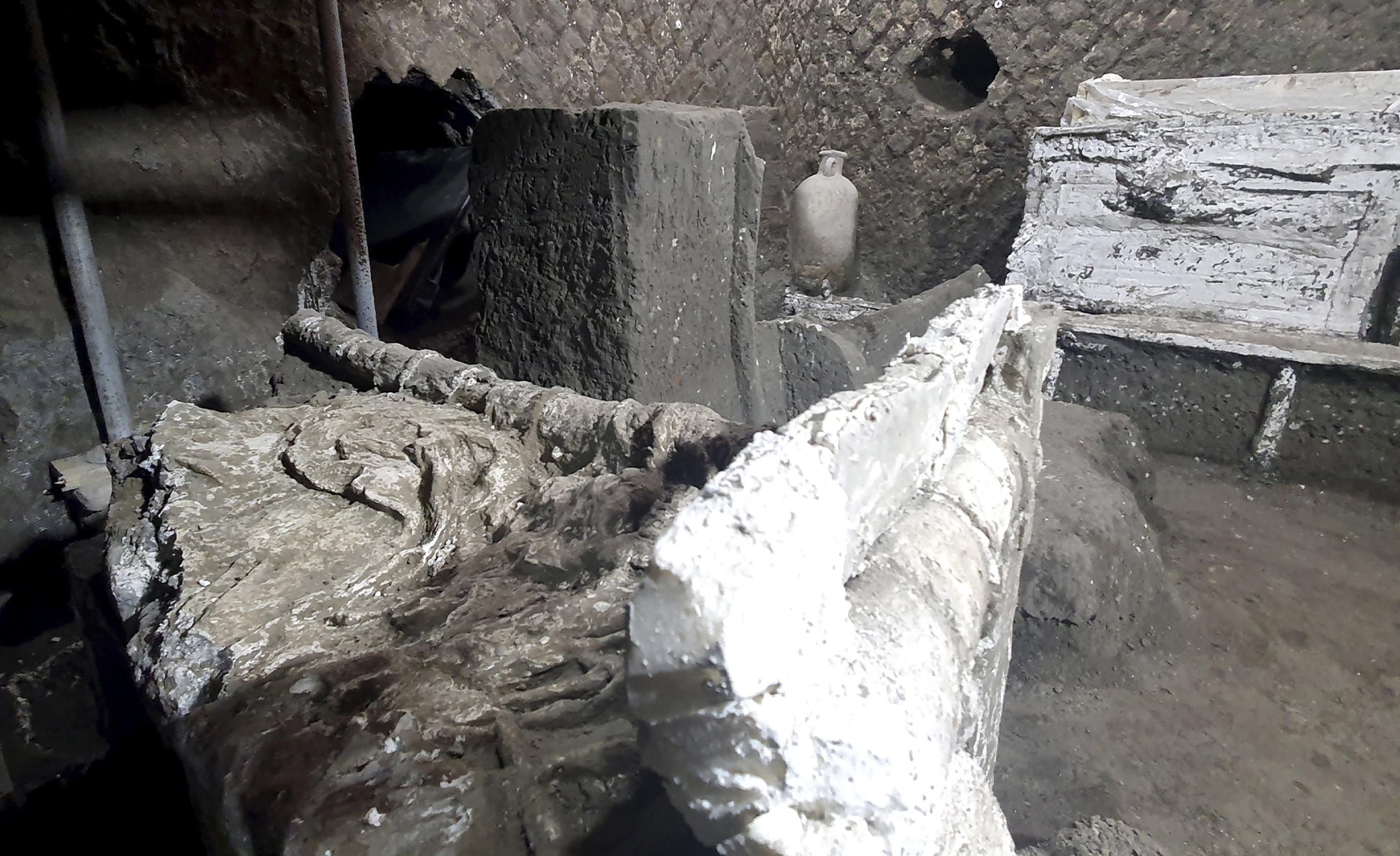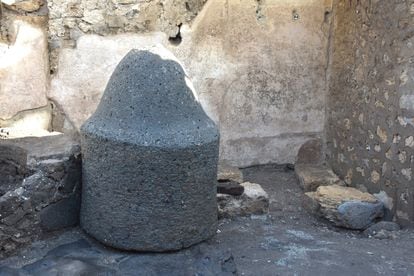Archaeologists have uncovered a Prison bakery during recent excavations in Pompeii.
Pompeii was a Roman city in the modern commune of Pompeii, located in the Campania region of Italy.

Pompeii, along with the Roman town of Herculaneum, were buried under 4 to 6 metres of volcanic material during the eruption of Mount Vesuvius in AD 79.
The Vesuvian eruption spewed forth a deadly cloud of super-heated tephra and gases to a height of 33 km, ejecting molten rock, pulverised pumice, and hot ash at 1.5 million tons per second.
Archaeologists have found a prison bakery in Regio IX, insula 10, in the central part of Pompeii, bounded to the north by the Via di Nola, to the west by the Via Stabiana, and to the south by the Via dell’Abbondanza.

The prison bakery housed enslaved people and a donkey, which were exploited to grind the grain needed to produce bread. The bakery is a confined space with small windows, fitted with iron grates to allow limited light.
The bakery was found during excavations of a Roman house, which was buried mid-renovation thousands of years ago. The house is divided into sections, with “refined frescoes” on one side, and a commercial bakery on the other.

Around the millstone area of the bakery are a series of semicircular recesses, which are notches made into the basalt flooring to trace a path for draft animals.
Pompeii Archaeological Park director, Gabriel Zuchtriegel, said in an interview: “The iconographic and literary sources, in particular the reliefs from the tomb of Eurysaces in Rome, suggest that a millstone was normally moved by a donkey and a slave. The latter, in addition to pushing the grindstone, had the task of inciting the animal and monitoring the grinding process, adding grain and removing flour.”






